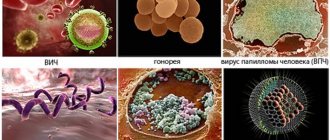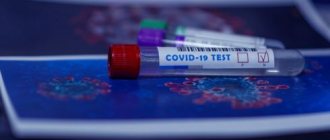Types of donation
By purpose
Blood can be donated for different purposes and for different reasons. Based on this, donation happens:
- Purpose – the donor donates blood, usually urgently, to treat a relative or another person after severe bleeding (after an accident, surgery).
- Allogeneic - the donated material ends up in a blood bank and is then used for patients in need of transfusion.
- Autologous is a type of donation when blood is taken from the patient before the operation, and after the operation the taken material is infused back into the donor.
- Replacement - in this case, the donor donates blood to replace the material previously taken from the general bank for a sick relative.
According to the submitted material
Depending on the circumstances, a donor can donate whole blood or only certain components.
Whole blood donation
The permissible amount of blood that a donor can donate at one time may vary slightly from country to country. In Russia, for example, 450 ml is considered the norm, while in the USA it is 480 ml, which is equal to 1 pint. The procedure usually takes no more than 15 minutes. After it, the donor fully recovers after an average of 8 weeks.
Plasmapheresis
During this procedure, the donor donates only plasma. To do this, they first take whole blood from him, then centrifuge it and separate the plasma from the cell mass. The liquid part is taken away, and the thick components are diluted with saline and reinjected into the donor’s vein. In one procedure, up to 600 ml of plasma can be taken without harm to health. The procedure lasts approximately 1 hour. Full recovery after plasmapheresis occurs after 2 weeks.
Immune plasma donation
As in the previous case, only plasma will be required from the donor. But the most important thing: it must contain antibodies to a specific virus or bacteria. In order for the donor’s body to contain these antibodies, he must receive the necessary vaccination before the procedure. That is, a special vaccine is injected into his body, provoking the production of antibodies and the formation of immunity to the disease.
Thrombocytapheresis
Platelets are extracted from the collected blood, after which the remaining components are injected back into the donor. This procedure is somewhat more complicated than plasmapheresis or donation of whole material. Up to 450 ml of platelet mass can be taken from a donor at one time. The procedure takes about 2 hours. Recovery will take within 2-3 weeks.
Erythrocytapheresis
The procedure is carried out similarly to plateletpheresis, but it is not platelets that are extracted, but erythrocytes - red blood cells (erythromass). Erythrocytapheresis lasts within 30 minutes. After the procedure, the donor recovers within 1 month.
Where does blood come from during menstruation and how much should it be?
The content of the article
During the menstrual period, the endometrium, a temporary layer that forms every month, leaves the uterine cavity. If fertilization occurs, the embryo will grow and develop within it. If not, it is replaced with a new layer. The process is necessarily accompanied by rupture of blood vessels, which is the cause of the bloody nature of the discharge.
The amount of blood lost varies. But there is an approximate average value, recognized as the norm - 40-60 ml per day. If the daily loss is more than 80 ml, then we are talking about menorrhagia (excessive blood loss).
During one menstrual cycle, a woman loses 200-300 ml. Over a lifetime, about 90 liters. These numbers are not frightening, but in the presence of heavy blood loss, this volume will be much greater, and this is already dangerous.
What happens to the body after donating blood?
On average, the adult human body contains about 5 liters of blood. That is, after 1 procedure, the donor loses almost 10% of its original composition. In addition, in the case of donating whole material, the amount of heme in his body decreases by almost 225-250 ml. Experts call heme a combination of ferrous iron and porphyrin. These substances form the core of hemoglobin and are responsible for transporting oxygen throughout the body. That is, after donating blood, oxygen metabolism in the donor’s body worsens. How dangerous is it? If the loss of heme does not exceed 250 ml, then the body copes with this quite easily, activating its own compensatory mechanisms.
In the aorta and carotid artery there are special baroreceptors that record the pressure inside the vessels. When the volume of blood in the vascular system decreases, they transmit special impulses to the heart and lungs, causing them to work more actively.
After the donation procedure, the body more actively produces antidiuretic hormone, which is responsible for the regulation of fluid in the body. Thanks to its activity, the blood vessels narrow slightly and the pressure in them is restored. When a person loses a certain amount of blood, a surge of another hormone is observed in his body - erythropoietin, which activates the formation of red blood cells. Thus, a chain of mechanisms is launched in the human body to quickly restore losses.
Donation: benefits for the body

As a rule, donor blood is needed:
- patients with multiple severe burns;
- patients with large blood loss during an accident, injury, surgery, childbirth;
- pregnant women with severe toxicosis;
- persons with severe anemia;
- patients with hematological or purulent-septic diseases;
- people with severe bleeding, etc.
In such cases, the donor's blood can save the recipient's life. But, as they say, there is another side to the coin: are there any advantages from donating blood for the donor himself.
Even in ancient times, folk healers used bloodletting to treat various diseases. Although in fact in many cases this procedure was inappropriate and did not in any way affect the course of the disease, the body can still receive certain benefits from small blood losses.
- Reducing oxidative stress.
Experts who studied the effects of donating blood on the donor's body found that this procedure helps reduce the amount of iron in the body, and with it, a decrease in oxidative stress. It turned out that after the loss of a certain amount of blood in the body, the amount of an enzyme with a complex name - superoxide dismutase - increases. This substance inhibits the activity or even destroys reactive oxygen species, which have a detrimental effect on humans. And since oxidative stress is considered one of the causes of malignant cell degeneration, this fact allowed scientists to look at donation as a means of preventing various types of cancer. Based on the results of a study that lasted almost 5 years, American scientists suggested that for the prevention of cancer, including the liver, throat, lungs and intestines, it is useful to be a donor twice a year.
- Reduces the risk of heart disease.
By observing donors, scientists concluded that donating blood helps reduce the risk of cardiovascular disease. Statistics say that donors are almost 80% less likely to suffer from cardiac disorders than other people.
Firstly, donation helps lower blood pressure. Secondly, it is known that one of the factors causing cardiac disorders is increased blood viscosity (the so-called “thick blood”). In such people, circulation in the vessels is disrupted, the risk of blood clots and arterial blockage increases, which can cause sudden death. But as it turns out, regular blood donation reduces its viscosity, which reduces the risk of heart attacks and strokes. Proponents of this theory claim that the beneficial effect on the cardiovascular system will be noticeable if you undergo the procedure at least once a year.
- Prevents autoimmune diseases.
Donation helps reduce the amount of proteins in the body that are responsible for inflammatory reactions. When these proteins accumulate excessively, there is a risk of damage to cell membranes and the development of processes leading to autoimmune diseases. Excess of these proteins can cause cancer, type 1 diabetes, rheumatoid arthritis, Alzheimer's or Parkinson's diseases, and accelerated aging. Donation can protect against all this.
- Promotes weight loss.
According to scientists from the University of San Diego (USA), during the donation procedure a person loses more than 650 calories. That is, regular blood donations can be useful for overweight people. But at the same time, frequent blood donations may be contraindicated for people with normal or underweight weight.
Can donation cause harm?

If a person does not have serious health problems, then a one-time blood donation will not cause harm to him. According to experts, negative side effects of donation occur in only 2 people out of 100. The most common side effect is fainting. After the procedure, a person may lose consciousness due to the resulting drop in blood pressure.
The question of whether regular donation can be harmful or dangerous is a concern for most people who donate blood. Moreover, in our time, experts have refuted the theory that this procedure helps renew the blood. On the contrary, you can often hear that regular donation causes addiction in a person, although it has already been proven that this is a myth. Of course, there are certain risks with such a procedure, although much of what donation actually poses is often greatly exaggerated.
- Anemia.
Uncontrolled blood donation is always a risk of developing iron deficiency, as well as a lack of other components, without sufficient quantities of which anemia develops. This danger can be prevented if you eat a balanced diet before and after the procedure, and also do not become a donor too often.
- Capillary permeability worsens.
Regular bloodletting worsens the permeability of the capillaries that supply blood to the pulmonary alveoli. The researchers made this assumption after observing donors with many years of experience.
- Increases the risk of neoplasms.
Although this theory does not yet have scientific confirmation, some groups of scientists are still confident that frequent blood donations activate the process of proliferation in the body. This term refers to a condition in which cells actively multiply by dividing, thereby causing tissue growth. When a person donates red blood cells regularly, new red blood cells are more actively formed due to proliferation. But, according to scientists, donating blood activates the accelerated growth of not only red blood cells, but also malignant cells (if any) in organs involved in hematopoiesis. And this is the red bone marrow, lymph nodes, thymus gland, spleen.
What are the consequences of menorrhagia?
Women with menorrhagia most often doubt that there is a problem. They get used to this state, thinking that this is normal. As a result, due to blood loss, the symptoms of anemia begin to bother you - dizziness, puffiness in the corners of the lips, weakness.
Women who experience heavy blood loss during menstruation must be examined for a latent form of iron deficiency anemia.
A decrease in hemoglobin is a late sign that may indicate a chronic process. In addition to anemia, an underlying disease that causes heavy periods also develops. These could be polyps in the uterus, one of the variants of a uterine tumor, endometriosis or endometritis. With endometriosis, the endometrium develops outside the uterus or becomes significantly thicker. All conditions are equally dangerous.
With heavy blood loss, the following signs may appear:
- sleep disturbance;
- fatigue;
- general weakness;
- drowsiness;
- irritability;
- emotional lability;
- decreased immunity;
- deterioration in performance.
How to properly prepare for donating blood

To minimize the risk of side effects from donation, it is necessary to properly prepare for the procedure in advance. The day before, the donor needs to avoid heavy physical activity and also have a good rest (in this regard, good sleep is very important).
You should absolutely not donate blood on an empty stomach. For breakfast, it is useful to choose foods rich in carbohydrates, including sweet tea and high-calorie dessert. But there are some restrictions regarding food. 24 hours before the delivery of the material and immediately before the procedure, it is prohibited to consume the following products:
- eggs;
- meat;
- cottage cheese;
- milk;
- nuts;
- sausages and smoked meats;
- chocolate;
- bananas;
- dates;
- vegetable and butter;
- fast food.
To avoid dizziness, after donation you need to lie down or sit for at least 15 minutes. During this time, blood pressure will have time to level out. After the procedure, you should not exert yourself physically and visit the bathhouse. You need to drink a lot of water throughout the day. This helps to quickly restore fluid reserves in the body. The diet on this day should be balanced and high in calories.
Absolute contraindications to donation:
- oncological diseases;
- radiation sickness;
- infectious diseases;
- cardiovascular diseases;
- presence of parasites;
- diseases of the digestive tract;
- disorders of the kidneys or liver;
- bronchial asthma;
- skin diseases;
- blindness and other eye diseases;
- osteomyelitis;
- recent surgery.
Time restrictions for donation:
- age under 18 years and after 60 years;
- body weight below 50 kg;
- pregnancy (within 12 months after birth);
- breastfeeding (3 months after completion);
- tooth extraction (10 days);
- taking antibiotics (14 days);
- vaccination (up to 12 months);
- drinking alcohol (48 hours);
- visits to Africa, Asia, Central or South America (3 years);
- recent tattoo, piercing (within 1 year);
- undergoing acupuncture procedure (within 1 year).
Myths about donation
You may become infected with some disease during the procedure.
This is actually an absurd assumption. In any clinic, disposable sterile systems are used for blood collection. They must be packaged in a sealed container and opened immediately before the procedure in the presence of the donor. This is the main guarantee of safety for the donor.
Best materials of the month
- Coronaviruses: SARS-CoV-2 (COVID-19)
- Antibiotics for the prevention and treatment of COVID-19: how effective are they?
- The most common "office" diseases
- Does vodka kill coronavirus?
- How to stay alive on our roads?
Donation takes a long time
If a person submits complete material, then the whole procedure takes no more than 10-15 minutes. More time will be required if only individual components need to be extracted from the donor blood.
It hurts
The only painful aspect of the procedure is puncturing the skin and puncturing the vein on the inside of the elbow. In terms of pain intensity, these sensations are compared to a pinch. Otherwise, the procedure is not painful.
Smokers cannot be donors
Smokers can donate blood, but they will have to abstain from the habit for at least 24 hours before the procedure and for another 1 hour after it.
How to treat heavy periods
First you need to visit a gynecologist or endocrinologist. Further tactics for patient management depend on the results of the examination:
- The problem is hormones. Hormonal therapy is prescribed to restore the balance of hormones. In this case, small hormone-dependent tumors also disappear, and endometrioid tissue is restored.
- Inflammation in the uterus . You will have to undergo a course of antibiotic therapy.
- Tumors, polyps, significant thickening of the endometrium. The gynecologist will prescribe diagnostic and therapeutic curettage of the uterus. Large tumors are removed.
Anemia is treated with medications containing iron. In parallel, it is necessary to take vitamin C, in which iron is better absorbed.
Should I go or not to a gynecologist if I have heavy menstruation? You can’t tolerate it, treat it! Where to put a comma is up to everyone to decide for themselves.
ONLINE REGISTRATION at the DIANA clinic
You can sign up by calling the toll-free phone number 8-800-707-15-60 or filling out the contact form. In this case, we will contact you ourselves.
If you find an error, please select a piece of text and press Ctrl+Enter





